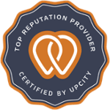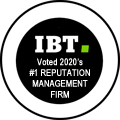10 Ways to Beat Google’s Algorithm
Rachael Giza, May 8, 2015
 Dubbed MobileGeddon by some and the SEO-pocalypse by others, Google recently changed its search algorithm to favor sites that are optimized to be viewed on mobile devices. What will Google do next? That's the question companies are now asking themselves as they attempt to remain competitive in the realm of digital marketing. It's no secret that Google continually adjusts its tactics and search algorithms, but while some changes, MobileGeddon for instance, are announced far in advance, other equally important changes are not. While we may not be able to predict every change that Google intends to make, there are some best practices we can implement to stay a step ahead.
Dubbed MobileGeddon by some and the SEO-pocalypse by others, Google recently changed its search algorithm to favor sites that are optimized to be viewed on mobile devices. What will Google do next? That's the question companies are now asking themselves as they attempt to remain competitive in the realm of digital marketing. It's no secret that Google continually adjusts its tactics and search algorithms, but while some changes, MobileGeddon for instance, are announced far in advance, other equally important changes are not. While we may not be able to predict every change that Google intends to make, there are some best practices we can implement to stay a step ahead.
1. Discern Link Studs vs. Link Duds
The name of the inbound marketing game is changing as Google becomes increasingly more adept at determining which links are actually generating traffic and which links are complete duds. In other words, Google is starting to care less about how many links you've built back to your site; if users aren't clicking on them, they're not serving a useful purpose and Google won’t factor them into your ranking. That's why going forward you'll need to be more selective as to how and where you build your links. This will require meaningful outreach with reputable, relevant platforms that attract sizeable audiences.
2. Go Mobile
Since we are still in the early stages of Google's mobile-friendly rollout, it is worth emphasizing that if your site is not yet mobile-friendly, there is still time left to make changes before your ranking suffers. To become mobile-friendly, companies will need to make their sites responsive, which means that key elements like formatting, links, and text size are automatically and seamlessly converted when a site is viewed on a mobile device. Not only has Google made mobile-friendliness a part of its ranking algorithm, it places a "mobile-friendly" tag underneath applicable SERP listings, and this will significantly influence which sites users decide to visit.
3. Diversify Digital Marketing Strategies
Companies with a successful online presence will be those that allocate time to all digital marketing strategies rather than just perfecting those they believe to be the most important. As the landscape of digital marketing expands and diversifies, companies will need to ensure they're keeping pace. For example, a company's desktop website may be perfectly optimized for search engines, but if that company is not engaging in mobile, local, and social marketing, then they will soon be missing out on valuable opportunities for growth. Digital diversity also ensures that if one strategy needs to evolve, companies will have other strategies already in place to carry their marketing forward while they adapt.
4. Generate Online PR & Media Pitches
Online newsrooms have emerged as great marketing opportunities for companies seeking out new ways to stay ahead. Writing press releases and media pitches are ways for companies to build inbound links and generate buzz. After landing a mention in the press, be sure to place the resulting links on your site in an "In the News" or "Media" section. Doing so offers visitors the opportunity to learn more about your company, its expertise, and recent accomplishments before making a purchase; this online news section also serves as an easy way to build out your site and frequently publish fresh content.
5. Clean up your Links
What does your backlink portfolio look like? If it contains links that are toxic, spammy, or clearly the result of a negative SEO campaign—an unfortunate black hat tactic increasing in prevalence—it's time to clean up your links. To avoid receiving a manual or algorithmic unnatural link penalty from Google, use Google Webmaster Tools to identify and categorize bad links. Engage in outreach to owners of the sites that house these links using programs like URL Profiler or rmoov, and be sure to document your efforts each step of the way.
6. Consider Alternatives to AdWords
Though Google AdWords has been one of the primary ways companies have arranged for targeted pay-per-click advertising, they have also become increasingly costly due to the competitiveness of keyword bidding. Other alternative platforms have emerged as more effective, less expensive options. Platforms like Flipboard, StumbleUpon, or any niche site specific to your brand's product or service can help cut advertising costs and diversify audience reach.
7. Focus on Authoritative Content
Some experts are beginning to argue that authoritative content will emerge as the most important factor in growing and sustaining online traffic. If companies want to stay a step ahead of Google, then they will need to invest considerable effort into generating content that is unique, regularly published, and authoritative. What does quality, authoritative content look like? Aside from being well-written, this content will be newsworthy, crafted in a way that's pertinent to a company's target audience, and demonstrate that a company offers key insight into its industry.
8. Pay Attention to YouTube
YouTube is emerging as an advantageous opportunity for companies to expand their social media presence, and many predict that it will soon become the largest search engine in the world. While this remains to be seen, there's no doubt that YouTube will soon become an integral part of SEO strategy; that's why you'll want to invest in YouTube today. Consider ways to reach audiences with tutorials or a video highlight of a specific product or service. Video has already proven itself to be a popular form of content, and making this medium available to your audience will only improve their online experience.
9. Enhance User Experience
Enhancing user experience (UX) should be a top priority for companies with forward-thinking digital marketing plans. Google has been extremely transparent about its desire to improve user experience, and companies would be wise to not only meet Google's expectations for user experience by becoming mobile-friendly and offering quality content, but also to be proactive in finding other ways they can be more user friendly. Could navigation and site hierarchy become more intuitive? What about improving a site's search function or load speed? Even the addition of more high-quality external links could be something that users find relevant and helpful. These little changes can have meaningful payoffs.
10. Build your Brand with an Integrated Approach
Going forward, successful digital marketing strategies will be those that abandon separate, siloed tactics and instead seamlessly integrate all branches of marketing, from social media and content creation to lead generation and PR. Google continually demonstrates a preference for quality sites over sites that merely generate high-traffic or contain a lot of ranking keywords. An intelligent brand is one that focuses on long-game sustainability through a thoughtful and integrated approach that establishes cohesion across platforms.
How will you stay ahead of Google? Leverage the insight and expertise of WebiMax SEO and Digital Marketing professionals to ensure your company maintains its competitive edge by contacting us today.





